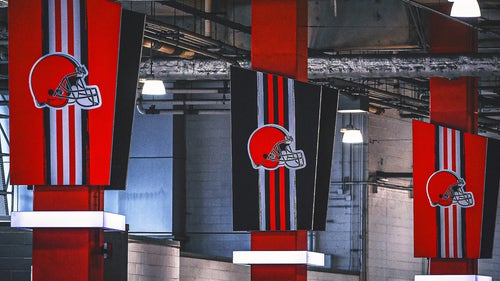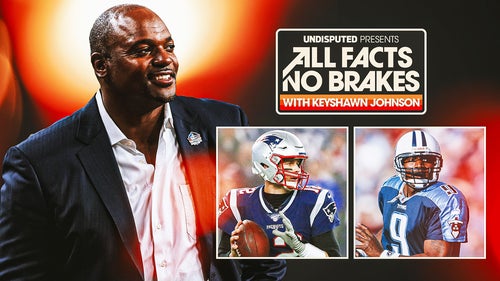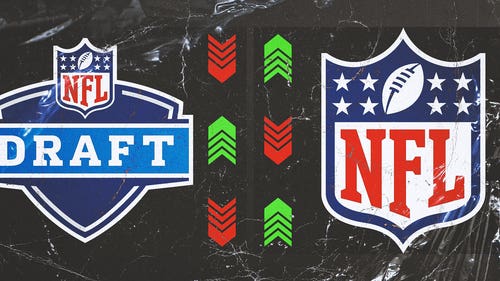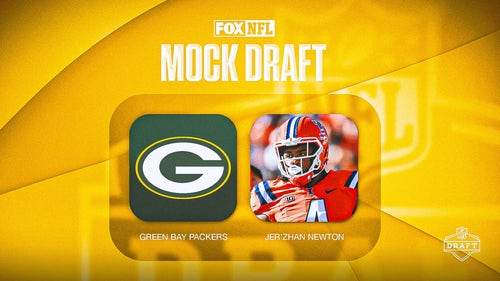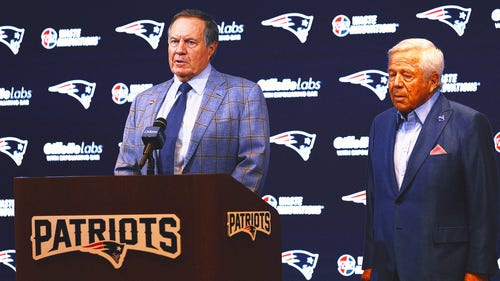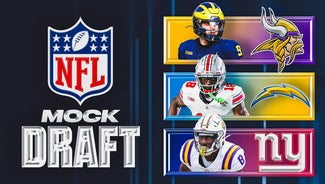
NFL on FOX ref sorts out key calls
The NFL kicked off its first full slate of action on Sunday, emphasis on the kick and action. And as the old saying goes, for every action, there is an equal and opposite reaction.
Opposite, indeed.
The action the NFL took during the offseason to move kickoffs up from the 30-yard-line to the 35 definitely had a big impact on Week 1.
Through the week's first 13 games (excluding the Sunday night Cowboys at Jets contest and Monday night's games), our figures show there were 61 touchbacks in 123 kickoffs — a shade under 50 percent. Contrast that with Week 1 of last season, when there were only 24 touchbacks in all 16 games.
But don’t panic fans. One week hardly makes a season. It’s still too early to arrive at any conclusions, but I would think the league would have to be a little concerned, even though there were still some very exciting returns.
Let’s take a look at some of the interesting plays from Sunday’s day games.
Detroit at Tampa Bay
THE SITUATION: Tampa Bay had the ball, first-and-10 at the Detroit 46-yard line with 10:34 left in the second quarter. Tampa Bay led 10-6.
THE PLAY: Tampa Bay quarterback Josh Freeman’s pass intended for Arrelious Benn was intercepted by Chris Houston at the Detroit 1-yard line. His momentum carried him into the end zone and the play was ruled a touchback. Two penalties were called on Tampa Bay: illegal motion and offensive pass interference. Both were declined.
MY TAKE: There was actually a third penalty on this play that the officials didn’t see — a group celebration by the Lions’ Houston and Louis Delmas in the end zone. I’m sure with the two offensive penalties called, the officials were moving toward the referee to give him all the information. Therefore, they didn’t see this action, which is taunting. Had this been called, all three penalties would have offset as live-ball fouls combine with dead-ball fouls and nullify each other. Tampa would have retained possession of the ball had the penalty been called, with the down being replayed.
It’s so hard to see everything, but you have to figure out a way to do so. This miss had a big impact in the outcome of the game as Detroit took over and subsequently scored the go-ahead touchdown.
NY Giants at Washington
THE SITUATION: Washington had the ball, second-and-11 from the Washington 30 yard-line with 4:29 left in the third quarter. Washington led 21-14.
THE PLAY: Washington quarterback Rex Grossman completed a 12-yard pass to Jabar Gaffney. The Giants challenged that Gaffney was out of bounds and the play was reversed.
MY TAKE: The referee had only 60 seconds to review three different aspects of this play. Wow, that’s not a lot of time.
First, he had to look to see if Grossman was beyond the line of scrimmage when he threw the pass. He wasn’t. As the rule states, his entire body and the ball have to be beyond the line at the point of release. The referee then needed to look at whether Gaffney had stepped out of bounds during his route. And finally, he had to look to see whether Gaffney had both feet down when he possessed the ball.
Everything about this play was close. Referee Ron Winter felt that Gaffney did not have both feet on the ground when he first possessed the pass. It’s a judgment call he makes, but one to me that didn’t seem to have indisputable visual evidence.
Atlanta at Chicago
THE SITUATION: Chicago had the ball, first-and-10 at the Chicago 48-yard line with 7:15 left in the third quarter. Chicago led 16-6.
THE PLAY: Chicago quarterback Jay Cutler completed a pass to Devin Hester, who took the ball to the Atlanta 1-yard line before being pushed out of bounds. Chicago challenged the ruling that Hester was out at the 1-yard line. The ruling was upheld.
MY TAKE: These rules can be so confusing. I felt this should have been reversed to a touchdown.
The rule states that it’s a touchdown if the ball is on, above or behind the plane of the opponent’s goal line in possession of a runner who advanced from the field of play. That’s what I thought happened here. The rule states an airborne runner must get some part of the ball over or inside the pylon. That, to me, covers a diving airborne player.
Referee Ed Hochuli felt that Hester was airborne and therefore could not prove that the ball was over or inside the pylon. This is obviously a rule that will be discussed this week in the officiating department of the NFL.
Buffalo at KC
THE SITUATION: Kansas City had the ball, second-and-8 at the Buffalo 19-yard line with 12:22 left in the second quarter. Buffalo led 14-0.
THE PLAY: Kansas City quarterback Matt Cassel completed a pass to Leonard Pope for a touchdown. The replay assistant initiated a review, feeling that the receiver did not get both feet down in bounds. The play was reversed to an incomplete pass.
MY TAKE: We waited to see when it would first happen, and this was it. The NFL’s new rule mandates that the instant replay official will review all plays that are ruled a touchdown. The replay official basically just replaced the head coach, who would have challenged this play anyways.
It is clear that the pass was incomplete and replay did its job. With the replay official now in charge of stopping the action when a touchdown is ruled, it saves the coaches from having to throw their red flags.
Atlanta at Chicago
THE SITUATION: Atlanta had the ball, first-and-10 at the Atlanta 43-yard line with 8 seconds left in the second quarter. The Bears led 16-3.
THE PLAY: Atlanta quarterback Matt Ryan completed a short pass to Jason Snelling who was pushed out of bounds at the Chicago 48-yard line. It appeared that there were two seconds left on the clock, but the officials ruled that time had expired.
MY TAKE: There were definitely two seconds remaining on the clock when Snelling stepped out of bounds. The game clock operator did not get the clock stopped before time expired. He is instructed to stop the clock upon his own positive knowledge that the clock should stop or by reacting to a signal from the officials.
There’s always a delay in the action to the reaction. The NFL actually did make the clock reviewable for one year, but then withdrew the rule after recognizing the complexity of trying to measure a proper delay in reaction time. Therefore, the following year the rule was rescinded. Long story short, the play today at the end of the first half was not reviewable.







































































































































